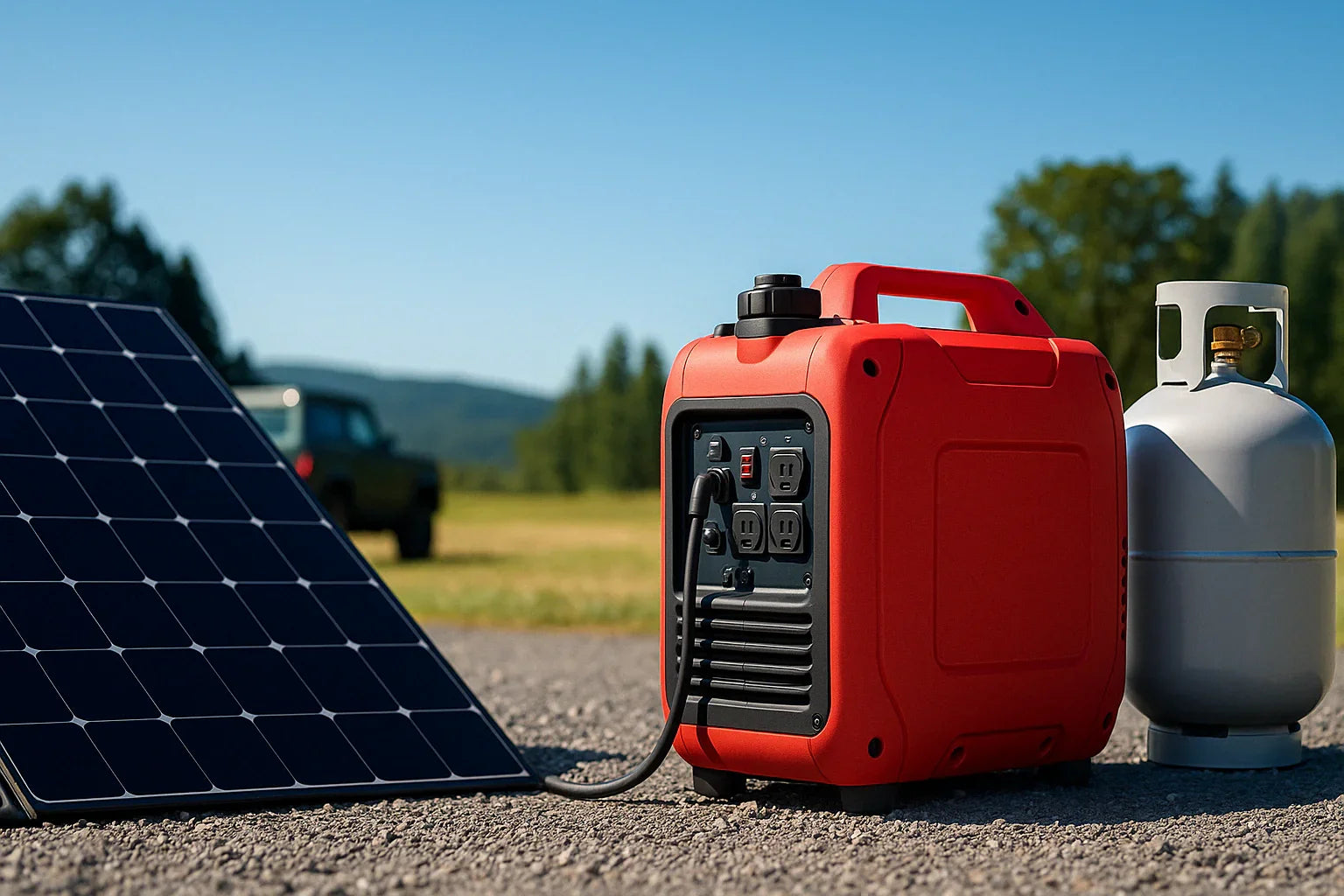Introduction
Need clean backup power for outages or off-grid camping? Inverter generators deliver stable, eco-friendly electricity with lower emissions. They cut CO₂ by 50% compared to traditional models. Unlike others, they adjust engine speed to save fuel. Fact.MR notes rising demand in remote and emergency settings. These portable systems run quietly, often below 60 decibels. Dual-fuel options like propane ensure cleaner combustion. They power fridges, medical gear, e-bikes, and small appliances. Homeowners and campers rely on generators for sustainable energy. Explore the best inverter generator to reduce your carbon footprint and stay prepared.
How Inverter Generators Work
Inverter-based generators rely on advanced power conversion to deliver safe, stable electricity. They operate through a three-stage process:
Generate: A gasoline or propane-powered engine creates alternating current (AC).
Convert: That AC is converted to direct current (DC), which is easier to regulate.
Invert: The DC is then inverted back to AC, producing a consistent, pure sine wave output.
This process ensures low total harmonic distortion (THD)—typically under 3%—making inverter powers ideal for powering sensitive devices like laptops, medical monitors, routers, and smart appliances. Unlike older models, these generators can also dynamically adjust engine speed based on load, increasing efficiency while reducing noise and emissions.
Environmental Benefits of Inverter Generators
When compared with traditional open-frame generators, inverter models deliver substantial environmental and operational advantages:
| Feature | Traditional Generator | Inverter Generator |
| Emissions (CO, CO₂) | High | Up to 50% lower (source) |
| Fuel Efficiency | Constant speed, inefficient | 20–40% better fuel economy |
| Noise Level | 70–90 dB | 50–60 dB |
| Fuel Flexibility | Gasoline only | Gasoline, Propane (Dual-fuel) |
| Power Quality (THD) | Often >5% | Under 3% |
These benefits stem from integrated features like ECO mode, smart throttle controls, and compatibility with cleaner fuels like propane.
Propane generates fewer emissions than gasoline and is often more stable in cold weather, making it an excellent choice for both environmental and practical reasons.
Clean Energy Applications
Inverter generators have proven to be an excellent solution across a wide range of clean energy scenarios:
| Use Case | Description |
| Boondocking | Silent, reliable energy for remote camping |
| Off-grid Living | Supports solar systems during low production |
| Outdoor Recreation | Ideal for parks and nature-friendly activities |
| Emergency Backup | Keeps fridges and medical gear running during outages |
| Small Construction | Lower-emission power for rural job sites |
With the rise of hybrid solar setups, generators are frequently integrated into home energy systems. This SRNE Solar article explains how such configurations can reduce grid reliance and improve efficiency. In off-grid California communities, for example, solar panels paired with these generators have reduced fossil fuel usage by over 80%, helping achieve state-level climate goals without sacrificing reliability.
Choosing the Right Inverter Generator
To maximize environmental and operational value, selecting the right model is critical:
| Selection Factor | Recommendation |
| Power Output | Match needs: 1000W–3000W+ depending on usage |
| Fuel Type | Choose propane or dual-fuel models |
| Noise Level | Below 60 dB ideal for residential and natural areas |
| Smart Features | ECO mode, automatic throttle, remote monitoring |
| Certifications | Ensure CARB or EPA compliance |
Many inverter powers now support dual-fuel capability—typically gasoline and propane—which offers added flexibility in fuel sourcing and environmental performance. This adaptability is especially valuable in off-grid locations or during fuel shortages, allowing users to choose cleaner-burning propane when possible.
Looking Ahead: Innovation and Market Growth
Inverter generators are not just gaining market share—they’re driving the next wave of innovation in portable energy. Manufacturers are already producing hybrid-ready models that pair with solar panels and battery storage systems. A recent industry report forecasts a 5.8% compound annual growth rate (CAGR) in the global inverter generator market through 2030. This reflects increasing demand across recreational, commercial, and residential segments—especially in areas impacted by grid instability, wildfires, and natural disasters.
Emerging innovations include smart generators with Bluetooth or app-based controls, carbon monoxide sensors, and automatic load balancing to further improve safety and performance.
Conclusion
Inverter units power the clean energy revolution. They offer quiet, dual-fuel energy for camping and off-grid homes. Pure sine wave output ensures device safety, reliability. Propane compatibility cuts emissions for a greener future. Not just backup—they’re key to clean energy’s future.



